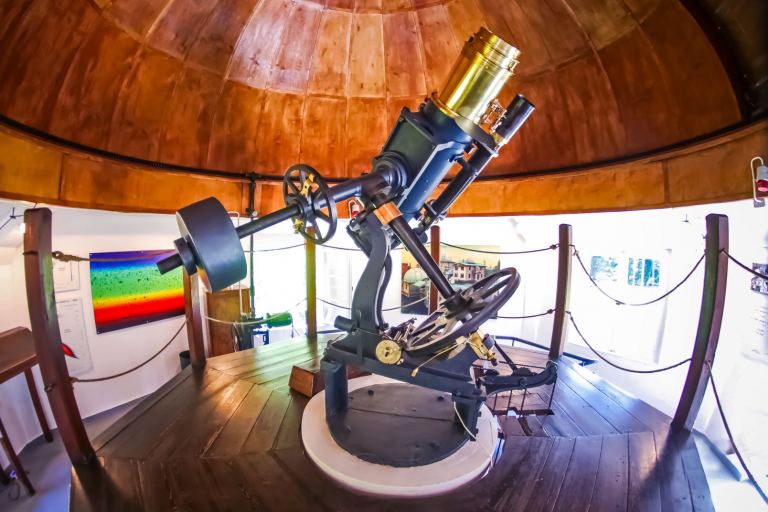Astronomers Discover a Star Hosting Both a Hot Jupiter and a Cold Super-Jupiter
Another star can be found in the Ursa Major constellation, approximately at a distance of 300 light years from us: HD 118203 or Liesma is a Sun-like star. In 2006, astronomers discovered an exoplanet (HD 118203 b) similar in size but twice as massive as Jupiter, orbiting very close to Liesma—just 7% of the distance between Earth and the Sun—classifying it as a “Hot Jupiter. ” In a recent study, an international team of astronomers announced the detection of a second exoplanet: Another Super-Jupiter with much bigger orbit around the star. This makes it cold and a Super-Jupiter in region4 thus referred to as Cold Super-Jupiter.
Gracjan Maciejewski of Institute of Astronomy at Nicolaus Copernicus University in Torun, Poland led the study for Astronomy & Astrophysics. The research team members comprised the Pennsylvania State University Department of Astronomy and Astrophysics and the Center for Exoplanets, and Habitable Worlds The other researchers were from Spain: the Instituto de Astrofísica de Canarias and the Agencia Espacial Española.
According them, they continue to reason that the newly discovered planet (HD 118203 c) has a mass ranging from 5-11 Jupiter mass and that it is located at a distance of 6 AU from its host star, and it takes the planet 14 years to complete a round the star. Liesma was first found in 1891 by using the Draper telescope which is now at NCU’s Institute of Astronomy near Torun, Liesma is a G-type yellow dwarf like the Sun, but it is 20% more massive and twice the size of the Sun. Liesma and its planetary system are quite young which is approximately 5 billion years, older to the Sun but slightly younger than it.

A planet has been hypothesized around HD 118203 for almost 20 years, it wasn’t until that we were able to use Radial Velocity (Doppler Spectroscopy) measurement to verify its existence in 2006. These measurements suggested the presence of a second planet with a large orbital period because of a linear trend detection. If true, this implies that the system organisation has orbital layers and hence provide bounds to the formation of hot Jupiters. As Prof. Andrzej Niedzielski, co-author of the study, explained in an NCU news article:As Prof. Andrzej Niedzielski, co-author of the study, explained in an NCU news article:
‘‘Doppler observations pointed us to the possibility that there might be still more to the system, pointing to the presence of another planet We immediately included this system in our observational programmes. ‘‘First, as a part of the Torun-Pennsylvania exoplanet research programme in collaboration with Professor Aleksander Wolszczan, we monitored the star using one of the largest optical instruments worldwide – the nine-metre Hobby-Eberly
Confident in the initial success, the member of the International team carried on observations with the Telescopio Nazionale Galileo (TNG) at the Roque de los Muchachos Observatory. But first they had to make sure that is system was clear of any other planets that may be lurking in the area. That is what Julia Sierzputowska, an astronomy student and co-author, said, “I examined photometric data of the TESS mission and found that no other planets of a size larger than two Earth’s radii existed; thus, no planets were massive enough to affect the dynamics of this system.
By 2023, the team provided enough evidence to support a Super Jupiter with a large orbit thus making HD 118203 a hierarchical system. Prof. Maciejewski summarized their achievement:Prof. Maciejewski summarized their achievement:
“As the dictum goes, ‘the harder they are, the sweeter the fruit. ’ We were lucky to collect the new data in March 2023 that helped us fix the orbital parameters of the planet Since the planet takes a few years to orbit its star, we used the Doppler observations in combination with available astrometric data that enabled us to define the mass of the planet and even draw the full model of the dynamics of the system

It is a system that consists of one planet that is closely located with a star that forms a binary with another planet which is located at much larger distance from the same star, thus forming binaries with the first planet. Despite the fact that both the planets are large and have eccentric orbits, they do not disrupt each other’s orbits for considerable span of time. The study says this is so because of General Relativity that does not allow constant oscillations in their orbits shapes and orientation.
HD 118203 is one of the few known hierarchical multiple system, or rather system of systems, which gives the understanding of formation of massive planets. This work could inform astronomers how the gaseous planets: Jupiter, Saturn, Uranus and Neptune formed in Solar system. The international team intends to go on examining the system in an attempt to identify other exoplanets.
Further Reading: NCU News, Astronomy & Astrophysics
Do not forget to share your opinion with us to provide you with the best posts !




0 Comments